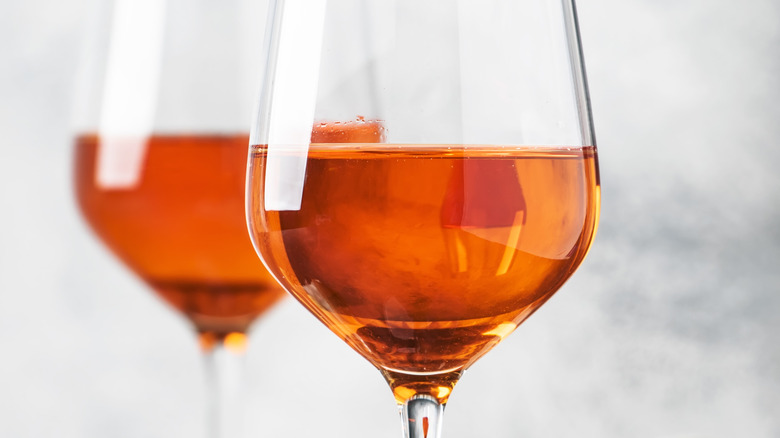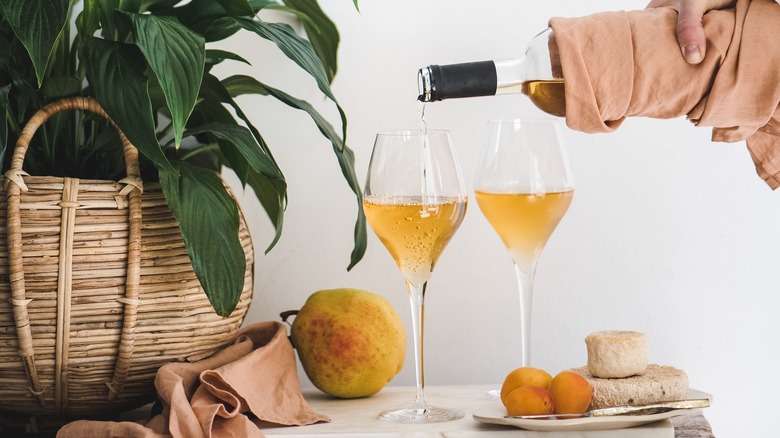How Orange Wine Gets Its Color
Natural wine is all the rage these days, with its own dedicated section on restaurant menus and natural wine bars popping up all over our cities. But it's not new — it's arguably the way wine came into being in the first place, a process believed to be 6,000 years old. Although it's ancient history, it's become a new fad in the past 20 years or so thanks to a resurgence in France, where winemakers spearheaded the "modern natural wine movement" in the early 2000s (via Vox).
In its simplest terms, natural wine is essentially grape juice that's been fermented without any additives. Vox explains that although some natural wine may use sulfites in small amounts, what makes it natural is the process itself: hand-picking the grapes and fermenting them with natural yeast and nothing else. No pesticides, no sugars, no fake flavors, and no interference of machinery or chemicals.
One of the most popular, talked-about, and intriguing subcategories of natural wine? You guessed it: orange wine. You've heard of it by now; you've seen the fun bottles, and maybe you've tasted the funky flavors. But do you know where it gets those distinguishing shades of color? What makes orange wine orange? Hint: there are no oranges involved whatsoever.
Why is orange wine orange?
It's not uncommon to assume that this type of natural wine is made with oranges or even some kind of orange grape — it's called orange wine, after all. But that's simply due to the orange and amber hues that the finished product takes on, and not its ingredients.
Also referred to as skin-contact wine, orange wine is made from white grapes left in their skins while they ferment (per Wine Enthusiast). "The skins contribute color, body and an impression of some tannin that changes the wine's texture, as well as changing the flavors of the wine," president of the International Wine Center Mary Ewing-Mulligan tells the magazine. That skin contact, whether fermenting for a few days or several months, is what gives orange wine its distinctive color.
While red wine is fermented with skin-contact red grapes, giving it its deep colors and flavors, and white wine is fermented with white grapes without skin contact, Eataly explains that orange wine is this interesting cross-section of both methods. It's a white wine made as if it were red wine. As a result, orange wine has both white and red wine qualities — yet the final product is entirely different from either in terms of color, aroma, flavor notes, and texture.
What does orange wine taste like?
Like whites or reds, the entire category of orange wine is complex and diverse, with different flavor profiles and characteristics depending on things like the grape variety, the climate, and the length of skin contact. But according to VinePair, orange wines are generally dry and relatively robust and can be tart or even almost sour. Often with a citrus or floral profile and herbaceous or fruity notes, "The common thread tends to be oxidative characteristics of nuttiness, honey, bruised apple, and dried citrus rind."
While orange wine can seem like a cross between a white and a red wine in many ways, which makes sense given how it's made, there's no denying that this wine style offers a unique palate experience. Because of the hints of tannin it gets from the skin contact and, as a result, an almost bitter element, VinePair recommends pairing orange wine with bold flavors like spice-filled dishes, grilled meats, and strong cheeses.


